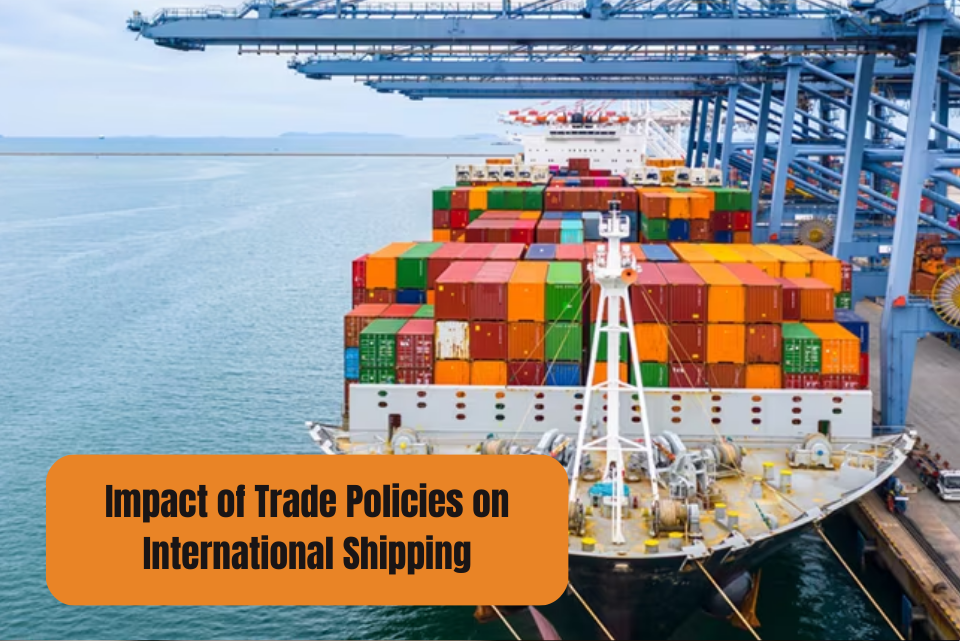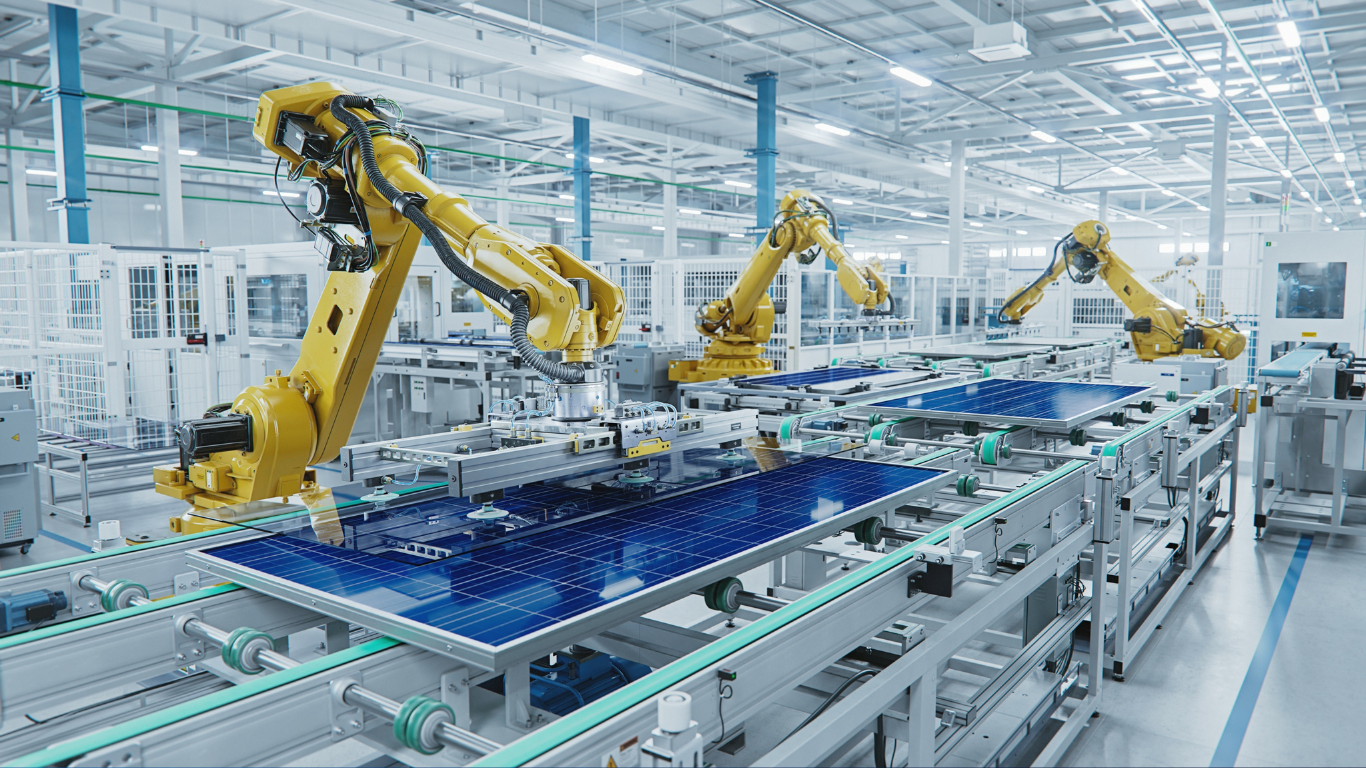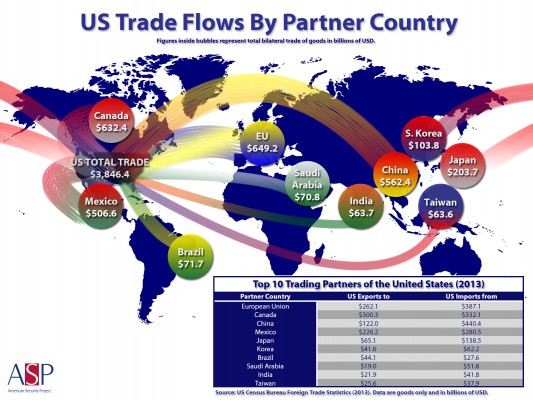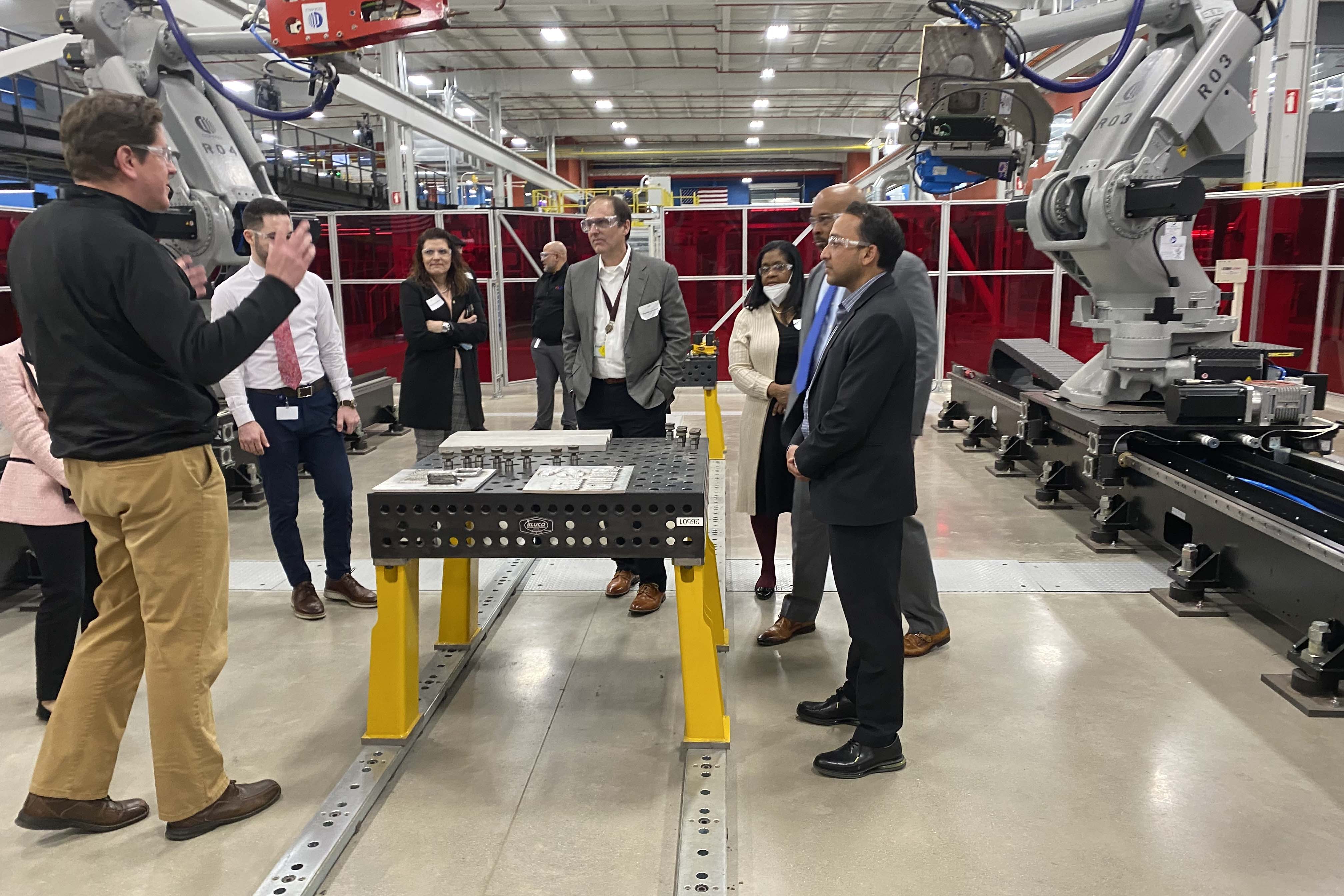
The Tariff Paradox: Why Trump's Widely Dismissed Strategy Still Has Powerful Backers — and What They See That Others Don’t
The Tariff Paradox: Why a Widely Dismissed Strategy Still Has Powerful Backers — and What They See That Others Don’t
In the rarefied circles of economic academia and policy think tanks, few arguments provoke as much collective eye-rolling as the notion that tariffs could jumpstart American manufacturing. The consensus is as durable as it is broad: tariffs raise prices, slow growth, invite retaliation, and rarely—if ever—achieve their stated goals. And yet, a small but defiant cadre within President Donald Trump’s policy orbit remains unconvinced.

They’re not just doubling down on tariffs—they’re attempting to rewrite the playbook entirely.
“In the eyes of many economists, this is a policy cul-de-sac,” said one analyst who advises institutional investors. “But for this group, the bet isn’t on textbook theory—it’s on using leverage that’s uniquely American, and timing that may be more favorable than critics admit.”
As the U.S. weighs its next moves on the global stage, and Trump’s economic agenda regains relevance in the political sphere, a provocative question is emerging: Could a theory that most experts reject—carefully calibrated tariffs as a means to national economic revival—actually work under specific, narrow conditions?
Against the Grain: The Strategic Tariff Argument
While the broader economics community sees tariffs as a blunt-force tool with more collateral damage than benefit, Trump's circle is championing a more sophisticated pitch—rooted in obscure but potent economic theory.
At the heart of the strategy is Optimal Tariff Theory, an idea that only makes sense when wielded by countries with sufficient market power.
Optimal Tariff Theory proposes that a large country, capable of influencing world prices, can improve its national welfare by imposing a specific tariff. This tariff works by improving the country's terms of trade (making imports relatively cheaper), although this benefit must be balanced against the tariff's distortionary effects.
The United States, as the world’s largest importer, fits that bill. The theory posits that by imposing a tariff, a dominant buyer like the U.S. can effectively force foreign suppliers to lower their prices to maintain access to the lucrative American market.
Summary of the United States' Share of Global Merchandise Imports Over the Past Decades
| Year | U.S. Share of Global Merchandise Imports | U.S. Import Value (Goods) | Global Import Value (Goods) | Source |
|---|---|---|---|---|
| 1970 | ~15% | Not specified | Not specified | WITA |
| 2019 | ~9% | $2.5 trillion (approx) | Not specified | WITA, U.S. Census Bureau/BEA |
| 2022 | 14.6% | $3.37 trillion | ~$23 trillion | TrendEconomy, Wikipedia, World Bank |
| 2023 | 13.1% - 14.6% | $3.11 - $3.2 trillion | ~$21 - $24.2 trillion | Visual Capitalist, TrendEconomy, OEC, WTO |
| 2024 | ~13.8% | $3.3 trillion | ~$23.9 trillion | Statista, WTO, World Bank |
“It’s about shifting the incidence of the tariff,” said a macro strategist familiar with internal policy discussions. “If foreign firms eat part of the cost, that’s money that stays inside the U.S. economy instead of flowing out.”
Stephen Miran, an economist aligned with this view, has cited academic research suggesting that a tariff of around 20% could—in theory—optimize the terms of trade, enhance domestic industry, and generate revenue. That revenue, if reinvested wisely, could fund the very industrial resurgence that free-market critics say tariffs destroy.
Reshoring by Design, Not Default

A second leg of the argument rests on reshoring incentives. By raising the relative price of imports, tariffs narrow the offshoring arbitrage that has hollowed out U.S. manufacturing for decades.
Table summarizing the differences and dynamics of Reshoring and Offshoring Arbitrage.
| Aspect | Offshoring Arbitrage | Reshoring Arbitrage |
|---|---|---|
| Cost Drivers | Leverages lower labor and production costs abroad | Focuses on reducing hidden costs (e.g., transport delays) |
| Risks | Supply chain disruptions, geopolitical instability | Higher setup costs, regulatory compliance challenges |
| Market Proximity | Operations distant from primary markets | Operations closer to primary markets |
| Quality Control | Potentially weaker due to distance | Enhanced due to proximity |
| Strategic Focus | Exploits wage differences across countries | Improves responsiveness and market alignment |
Dave Brat, a former congressman and economics professor, has publicly defended this view, framing tariffs not as ends in themselves, but as catalysts that “put capital back in the hands of Americans.” The intended effect is to tilt business decisions toward domestic production—not through mandates, but through market signals.
“If offshoring made sense when labor was cheap and imports were frictionless, what happens when that calculus changes?” one policy insider asked. “You get domestic investment. That’s the play.”
This theory of price-differential-induced reshoring hinges on more than just tariffs. Success depends on complementary policies: tax incentives, workforce training, infrastructure, and R&D. In this model, tariffs are not protectionist relics—they are strategic nudges embedded in a larger industrial blueprint.
Why This Could Work—Even If It Probably Won’t
Make no mistake: even proponents admit the conditions for success are narrow. The strategy relies on a confluence of economic leverage, political will, and global restraint that is rare—and perhaps fleeting.
1. Market Power in a Multipolar World
The U.S. still accounts for nearly 15% of global imports. If any nation can dictate terms as a buyer, it’s the United States. A properly set tariff might coerce exporters into cutting prices, especially if they depend heavily on U.S. demand.

2. Revenue for Strategic Reinvestment
Tariffs are, functionally, taxes. But unlike income taxes, they are levied on foreign firms. If those proceeds are funneled into strategic initiatives—clean energy, semiconductors, digital infrastructure—they could double as both deterrents and development tools.
Annual U.S. Customs Duties Collected Over the Last Few Years
| Fiscal Year | Customs Duties Collected (Billions USD) |
|---|---|
| 2024 | $88.07 |
| 2023 | $80.0 |
| 2022 | $111.8 |
| 2021 | $93.8 |
| 2020 | $78.8 |
| 2019 | $71.9 |
3. Manufacturing as a Feedback Loop
In theory, reshored factories don’t just produce goods—they generate technological spillovers, skilled jobs, and local economic vitality. Over time, these clusters can become self-reinforcing ecosystems. Think Silicon Valley, but for advanced manufacturing.
4. The Retaliation Variable
Here’s where the dream often dies. Retaliation is the reflexive counterpunch in trade wars. But in a best-case scenario, trading partners either don’t respond symmetrically—or do so in sectors where the U.S. has less to lose. “You need restraint from others and discipline at home,” said one trade expert. “That’s a rare combination.”
The Critics: Not Just Skeptics—Fundamental Detractors
Despite the internal coherence of the theory, mainstream economists remain deeply unconvinced. Their objections are foundational: that tariffs distort markets, that retaliation is inevitable, and that no model has ever shown long-term gains from protectionism.
“This isn’t just bad policy,” said one academic. “It’s a misreading of economic gravity. You can’t tariff your way to competitiveness.”
Their argument rests on history: past tariff experiments—from the Smoot-Hawley Act of the 1930s to modern trade skirmishes—have tended to spark inflation, strain global alliances, and damage consumers.
Did you know that the Smoot-Hawley Tariff Act of 1930 had a profound impact on global trade? This protectionist policy led to a significant decline in international trade volumes, with global trade plummeting by about 66% between 1929 and 1934. In the U.S., imports fell from $4.4 billion to $1.5 billion, and exports dropped from $5.4 billion to $2.1 billion during the same period. The act triggered retaliatory tariffs from over two dozen countries, further exacerbating the economic downturn and contributing to the severity of the Great Depression. This historical event serves as a cautionary tale about the potential consequences of protectionist trade policies on global economic stability.
Moreover, the idea that U.S. companies will meaningfully reshore without addressing structural issues like healthcare costs, regulatory complexity, and workforce gaps strikes critics as naive.
Between Ideology and Instrument
So why pursue a strategy that most economists dismiss?
Because it reframes economic policy as an exercise in power—not equilibrium. In this framing, tariffs aren’t just taxes; they’re pressure valves, bargaining chips, and investment signals. They represent a shift from neoliberal passivity to industrial activism.
Did you know that neoliberalism is an economic philosophy focused on free markets, privatization, deregulation, and minimal government intervention? Rising to prominence in the late 20th century under leaders like Margaret Thatcher and Ronald Reagan, it advocates for fiscal austerity, globalization, and reduced union power to boost efficiency and economic growth. While it has influenced policies like trade agreements and industry deregulation, neoliberalism is often criticized for increasing economic inequality, undermining democracy, and neglecting environmental and social concerns. Its impact remains a hot topic in debates about modern economic systems.
This isn’t a return to 20th-century protectionism. It’s an attempt to weaponize demand-side leverage in a world where geopolitical rivalries are reshaping supply chains. And while it may be risky, some argue that risk itself is part of the strategy.
“For thirty years we optimized for efficiency,” said one investment advisor. “Maybe it’s time to optimize for resilience—even if that means breaking some old models.”
A Renaissance or a Mirage?
The stakes are enormous. If the bet fails, consumers pay more, allies retaliate, and companies simply adjust supply chains to other low-cost regions. But if the conditions align—if retaliation is restrained, if revenue is reinvested smartly, if reshoring becomes self-sustaining—then what now seems implausible could become transformative.
It’s not the likeliest path. But in the eyes of its advocates, it’s one worth exploring. Not because it conforms to consensus—but precisely because it doesn’t.
“Every strategy looks impossible until the conditions change,” said one analyst. “And conditions are changing faster than we think.”
The Final Word
In a world increasingly defined by economic nationalism, strategic decoupling, and supply chain reconfiguration, the tariff debate is no longer a relic of past ideological battles—it’s a live question of future economic architecture.
Dismiss it at your own risk.
